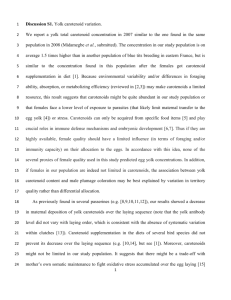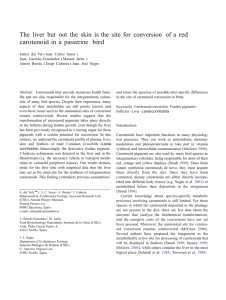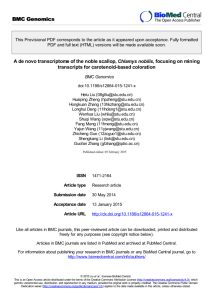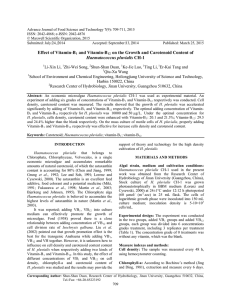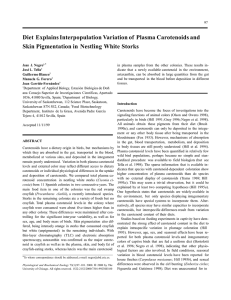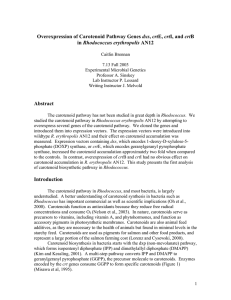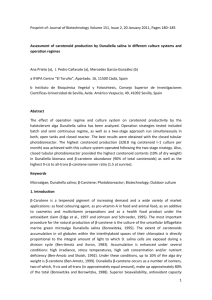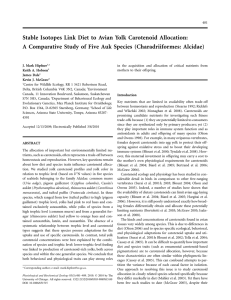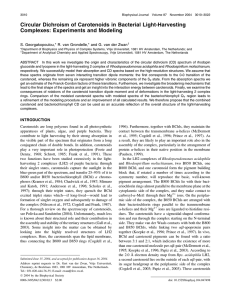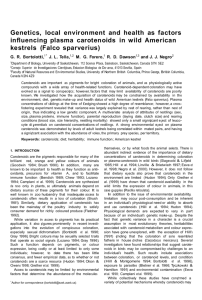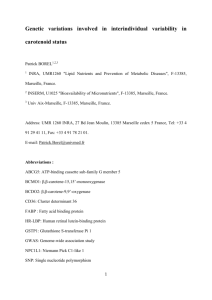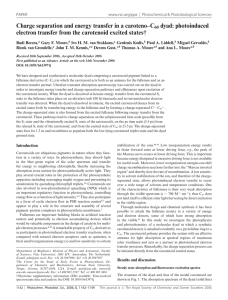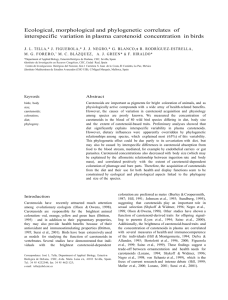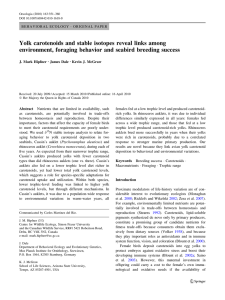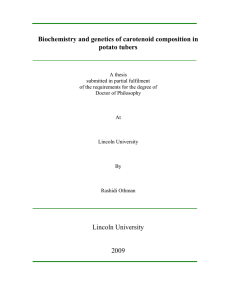Carotenoid Pathway in Capsicum Annuum
advertisement
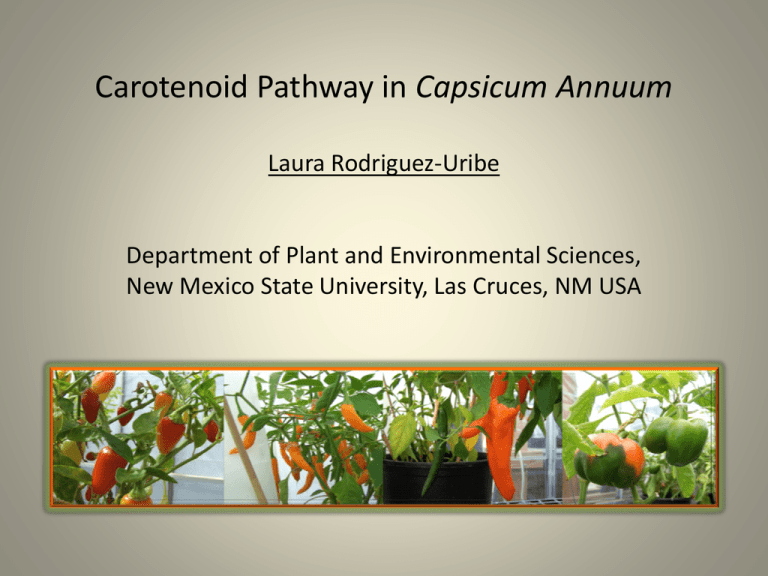
Carotenoid Pathway in Capsicum Annuum Laura Rodriguez-Uribe Department of Plant and Environmental Sciences, New Mexico State University, Las Cruces, NM USA Carotenoids •Most abundant natural pigments, more than 700 carotenoids have been identified in photosynthetic organisms such as plants, algae, and bacteria Carrot β-carotene Corn Lutein/Zeaxanthin Tomato Lycopene Pepper Capsanthin/Capsorubin Algae Bacteria β-carotene Deinoxanthin Carotenoid biosynthetic pathway in Capsicum Peppers possess the most evolved carotenoid pathway Carotenoid biosynthesis and accumulation Fruit wall Carotenoid composition changes during fruit ripening Chromoplasts Biological Antioxidants, Vitamin A precursor Carotenoids quench free radicals, prevent protein oxidation and DNA damage Sources of Free Radicals: Cigarette smoke Environmental pollutants Radiation Effects: Cancers Atherosclerosis Damaged DNA Ultraviolet light Heart disease Pesticides Rheumatoid arthritis Industry New Mexico red pepper Pigments (natural dyes) Cosmetics Carotenoid Quantities Carotenoids in Orange Peppers Carotenoid profile in ripe orange peppers Thin layer chromatography with the carotenoid composition at different ripening stages G GO O G GO O G GO O Cs Cr V Green Green/Orange Orange Valencia Fogo NuMex Standards Sunset Objectives • Investigate the β-carotene content of orange fruited capsicum varieties to correlate the relationship between fruit color and β-carotene content Carotenoid biosynthetic genes in orange colored peppers • Carotenoid pathway genes phytoene synthase (Psy), lycopene-β cyclase (Lcyb), β-carotenoid hydrolase (CrtZ-2), and casanthin-capsorubin synthase (Ccs), from six orange fruited peppers were cloned and sequenced. • Mutations in the Lcyb of the six orange peppers, and a new version of the Ccs gene from Fogo pepper genes. Multiple alignment of the capsanthincapsorubin synthase protein Multiple alignment with the Ccs amino acid sequences from Yolo wonder, Valencia, and Fogo. Expression of carotenoid biosynthetic genes during ripening in orange peppers G GO O G GO O G GO O Psy Green Lcyb CrtZ-2 Ccs EtBr Green/Orange Valencia Orange Fogo NM Sunset Approaches to test the functionality of the CCS mutant • Biotechnological: Expression of the wild type and mutant Capsanthin-Capsorubin synthases as recombinant proteins in an heterologous system such as Escerichia. Coli (E.coli) and assay its activity. • Biochemical: Purification and characterization of the Capsanthin-Capsorubin from Valencia and Fogo peppers chromoplasts Expression of Capsanthin capsorubin synthase in E. coli as a recombinant protein kD 1 2 3 4 5 6 7 75 50 37 25 Ccs Purification of CCS from pepper fruit wall chromoplasts Chromoplast Fruit wall Percoll density gradient Isolation and Purification of CCS protein Conclusions Carotenoid composition differs among peppers The six orange peppers in this study have a new version of the Lcyb gene A novel version of the Ccs gene was found in the Fogo cultivar Differences in gene expression in the carotenoid pathway might determine the carotenoid composition in mature peppers . Overall Significance NMSU Research Metabolomics / Breeding New Mexico Breeders Nutrient + Pigment Rich Peppers ↑ β-Carotene ↑ Capsanthin/Capsorubin ↑ Quality in New Mexico World Nutrition Improvement of other agronomically important crops Thank You! Dr. Mary A. O’Connell Dr. Richard D. Richins Lab members Dr. Paul Bosland Chile Pepper Institute Supported in part by NM Agricultural Experiment Station and NIH grant R25 GM61222 Carotenoid Chemistry Two kinds of carotenoids » Non Pro-Vitamin A lycopene » Pro-Vitamin A -carotene

